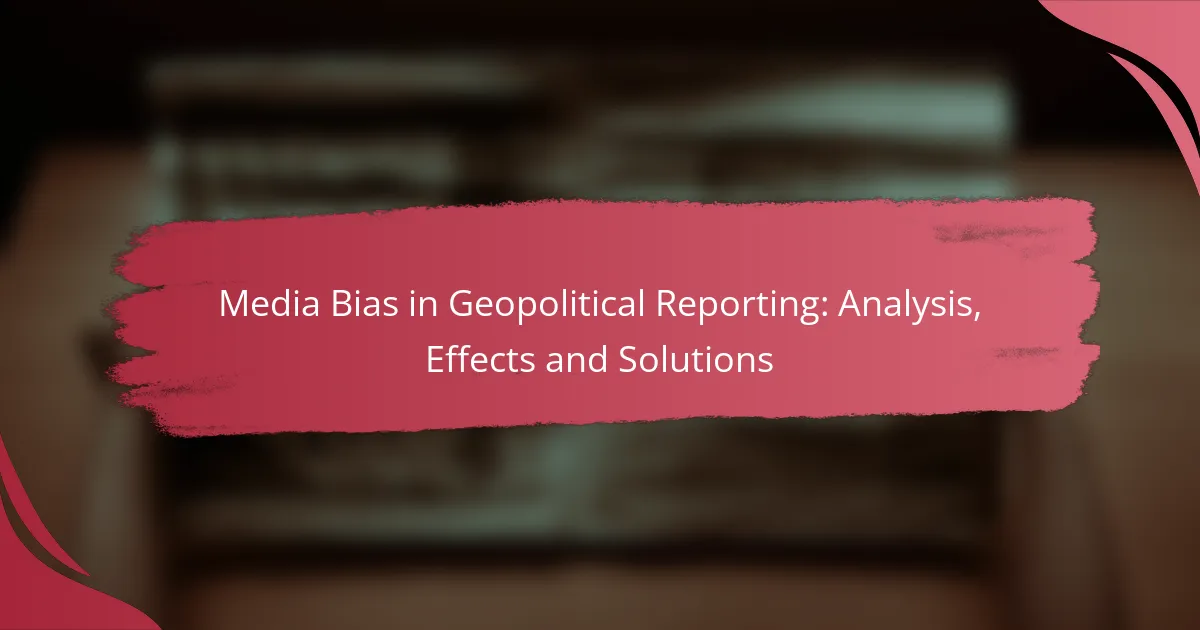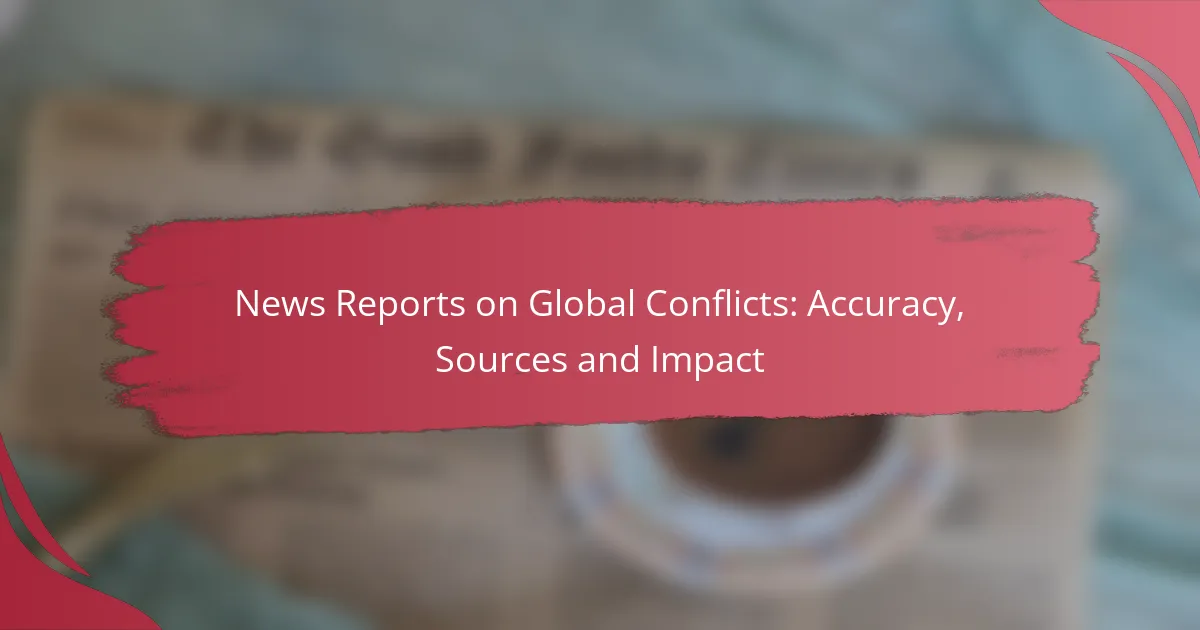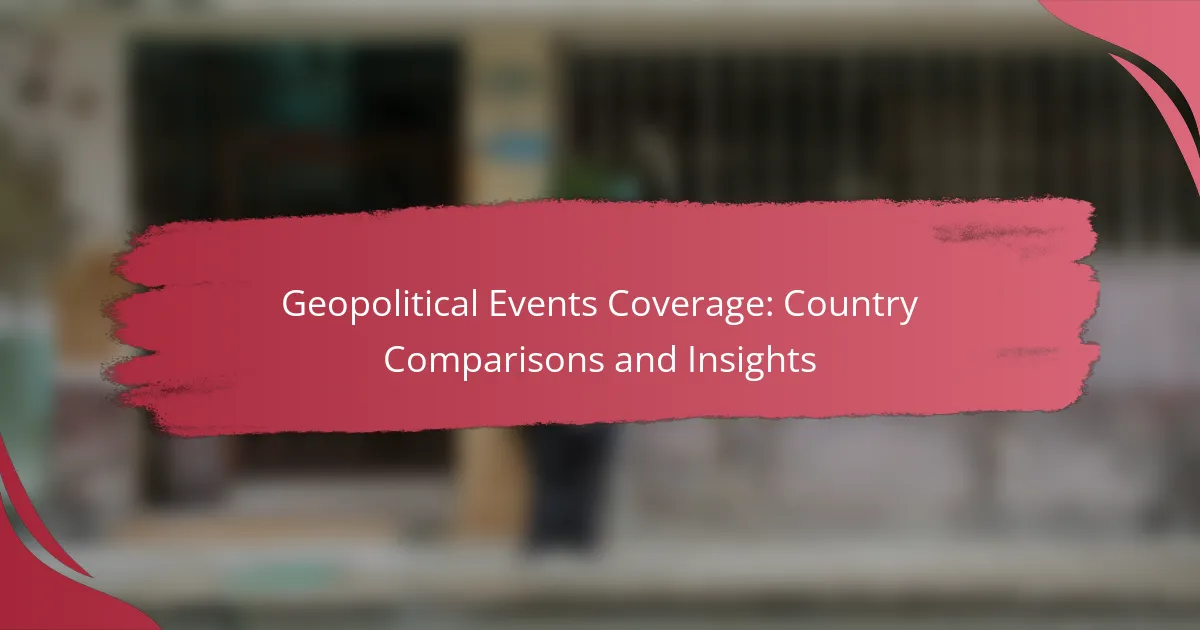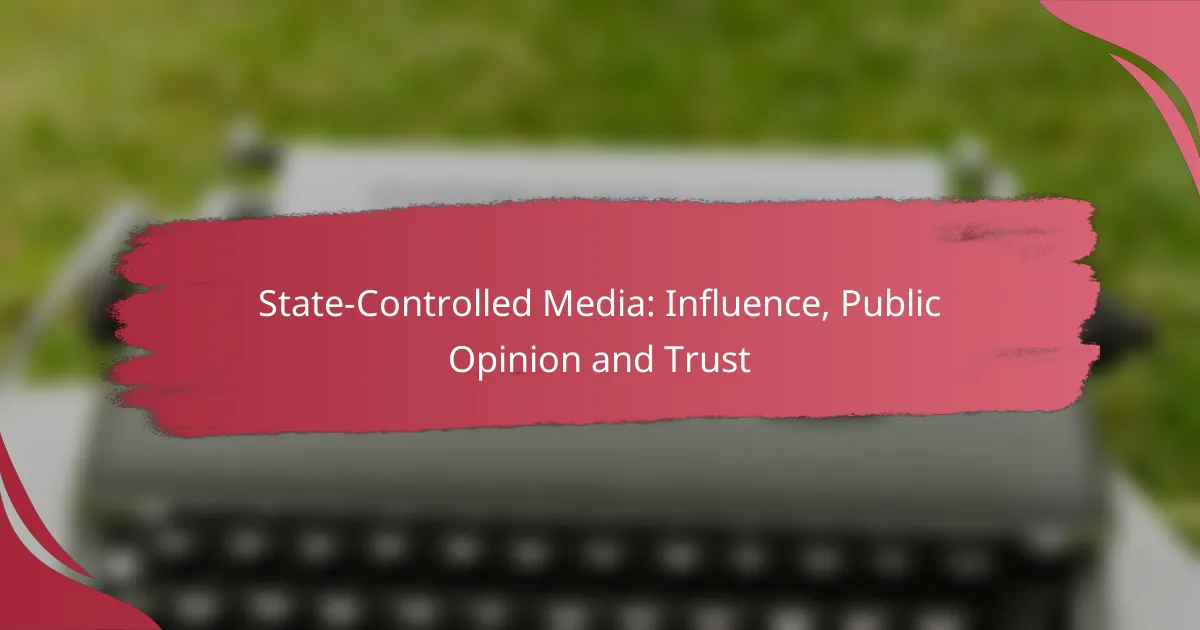Media bias in geopolitical reporting plays a critical role in shaping public perception and influencing policy decisions. By analyzing content and assessing the tone of coverage, we can identify how narratives are constructed and their potential impact on societal dynamics. Addressing this bias requires strategic measures, such as implementing editorial guidelines and fostering diverse perspectives in journalism.
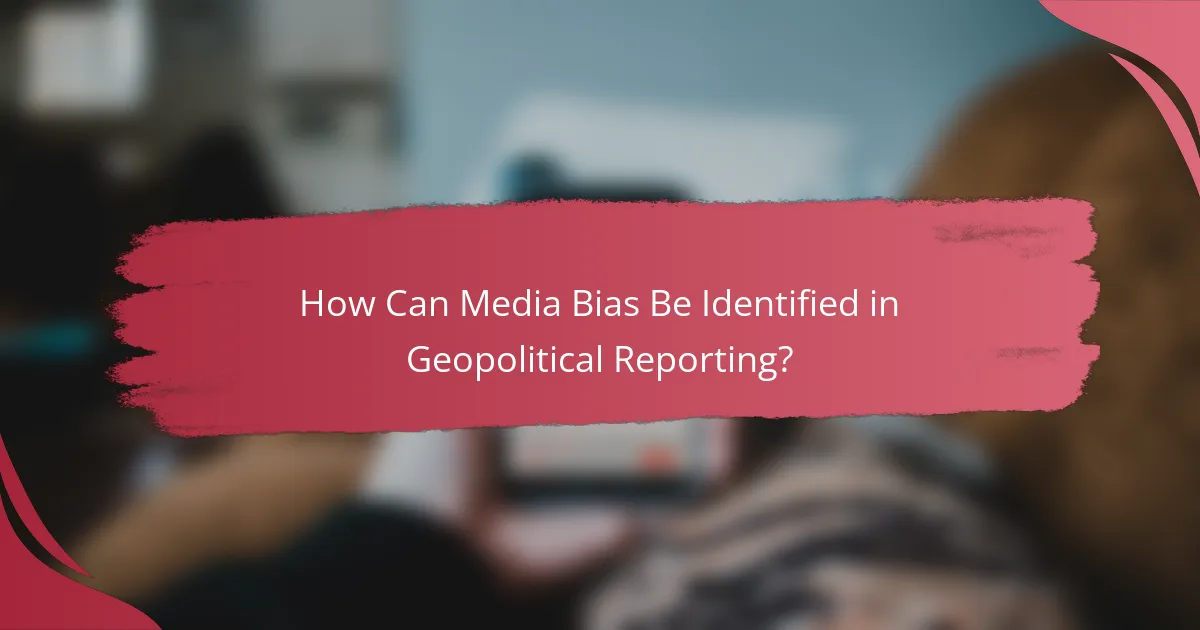
How Can Media Bias Be Identified in Geopolitical Reporting?
Media bias in geopolitical reporting can be identified through various methods that analyze content, verify facts, and assess the overall tone and perspective of the coverage. Recognizing bias is crucial for understanding how narratives are shaped and how they can influence public perception and policy decisions.
Content analysis methods
Content analysis involves systematically evaluating news articles and broadcasts to identify patterns of bias. This can include examining the language used, the selection of sources, and the framing of issues. For example, a study might analyze how often certain countries are mentioned in a positive or negative light compared to others.
Researchers often categorize articles based on their tone, focusing on whether they present information in a neutral, supportive, or critical manner. This method can reveal significant disparities in how different media outlets report on the same geopolitical events.
Fact-checking organizations
Fact-checking organizations play a vital role in identifying media bias by verifying the accuracy of claims made in geopolitical reporting. These organizations assess statements made by journalists and public figures, providing context and corrections when necessary. Examples include PolitiFact and FactCheck.org, which focus on political claims but also address media reports.
By cross-referencing information with reliable sources, fact-checkers can highlight discrepancies and biases in reporting, helping consumers discern the reliability of the information presented.
Bias rating systems
Bias rating systems evaluate media outlets based on their political leanings and reporting styles. Websites like Media Bias/Fact Check and AllSides provide ratings that categorize outlets as left, right, or center. These ratings help consumers understand the potential biases of the sources they are reading.
While these systems can provide a quick reference, it’s important to consider the methodology behind the ratings and to use them as a starting point for deeper analysis rather than as definitive judgments.
Expert reviews
Expert reviews involve assessments by scholars and professionals who specialize in media studies and journalism. These reviews can provide insights into the biases present in specific reports or outlets, often highlighting the implications of such biases on public understanding.
Engaging with expert analyses can deepen one’s understanding of media bias, as experts often contextualize findings within broader societal and political frameworks, offering a more nuanced view of the implications of biased reporting.
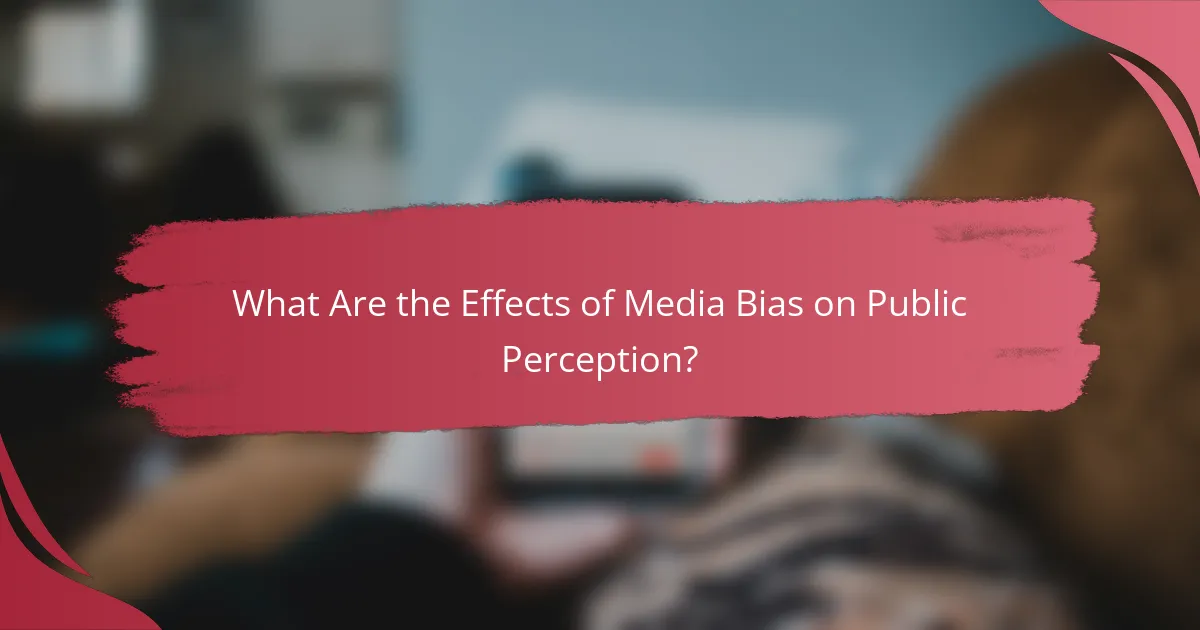
What Are the Effects of Media Bias on Public Perception?
Media bias significantly shapes public perception by influencing how individuals interpret news and information. Biased reporting can lead to skewed understandings of events, affecting opinions and societal dynamics.
Influence on political opinions
Media bias can heavily influence political opinions by framing issues in a way that aligns with specific ideologies. For instance, a news outlet that consistently portrays a political party negatively may sway public opinion against that party, while favorably framing another party can enhance its support. This can create an environment where voters make decisions based on partial information.
As a result, individuals may become more entrenched in their beliefs, leading to a polarized political landscape. Voters often seek out media that reinforces their views, further entrenching biases and reducing exposure to opposing perspectives.
Impact on social polarization
Media bias contributes to social polarization by creating echo chambers where individuals only engage with like-minded viewpoints. This can lead to increased division within society, as people become less tolerant of differing opinions. Social media platforms often amplify this effect, allowing biased narratives to spread rapidly among specific demographic groups.
As communities become more polarized, the potential for conflict increases, as individuals may perceive those with opposing views as threats. This division can hinder constructive dialogue and compromise, making it challenging to address societal issues collectively.
Effects on trust in media
Media bias can erode public trust in news organizations, as audiences may feel that reporting is not objective or reliable. When people perceive bias, they may question the credibility of the information presented, leading to skepticism about all media sources. This decline in trust can have long-term implications for journalism and democratic discourse.
To rebuild trust, media outlets must prioritize transparency and strive for balanced reporting. Engaging with diverse perspectives and correcting biases can help restore credibility and encourage audiences to rely on news sources for accurate information.
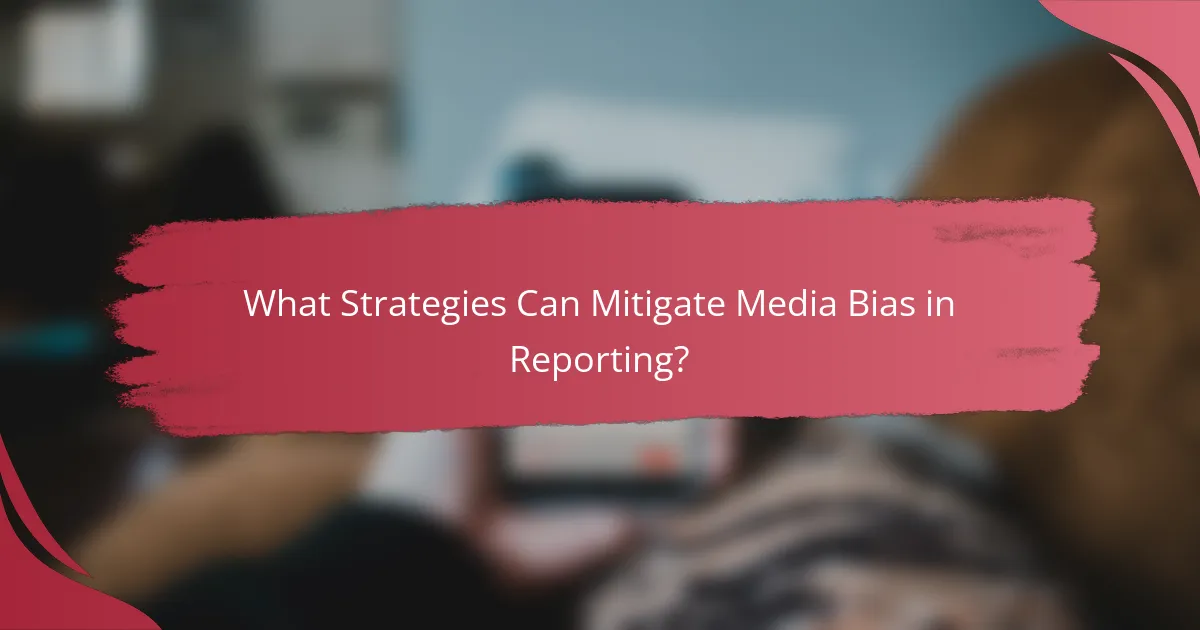
What Strategies Can Mitigate Media Bias in Reporting?
To mitigate media bias in reporting, organizations can adopt specific strategies that promote fairness and accuracy. These strategies include implementing editorial guidelines, providing training for journalists, and encouraging diverse perspectives in news coverage.
Implementing editorial guidelines
Establishing clear editorial guidelines is crucial for ensuring consistent and unbiased reporting. These guidelines should outline the principles of fairness, accuracy, and impartiality, serving as a framework for journalists when covering sensitive geopolitical issues.
Regular reviews and updates of these guidelines can help adapt to changing media landscapes and audience expectations. For instance, a news outlet might implement a policy requiring multiple sources for controversial claims, reducing the risk of presenting biased information.
Training for journalists
Training programs for journalists can significantly enhance their ability to recognize and counteract bias in their reporting. Workshops and seminars should focus on critical thinking, fact-checking, and understanding the impact of language choices on audience perception.
Additionally, ongoing education about cultural sensitivity and regional contexts can help journalists report more accurately on international issues. For example, training might include lessons on the historical background of conflicts to provide deeper insights into current events.
Encouraging diverse perspectives
Encouraging diverse perspectives in newsrooms is essential for reducing bias. This can be achieved by hiring journalists from various backgrounds and experiences, which enriches the coverage of geopolitical topics.
Moreover, actively seeking opinions from experts and communities affected by the news can provide a more balanced view. For example, including voices from different political or cultural groups in reporting can help highlight underrepresented narratives and foster a more comprehensive understanding of complex issues.
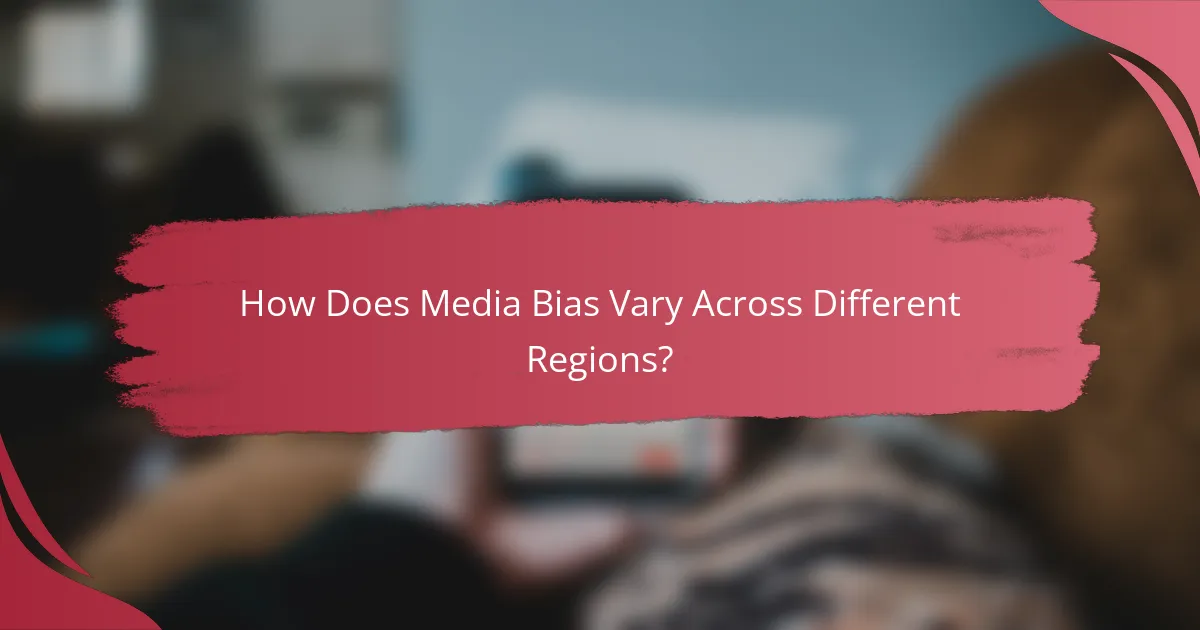
How Does Media Bias Vary Across Different Regions?
Media bias manifests differently across regions due to cultural, political, and economic factors. In some areas, reporting may favor government narratives, while in others, it may lean towards sensationalism or specific ideological perspectives.
Case study: Western media
Western media often emphasizes individualism and freedom of expression, which can lead to a bias towards liberal viewpoints. Coverage of geopolitical events may focus on human rights issues and democratic values, sometimes overshadowing other perspectives.
For example, during conflicts, Western outlets may highlight civilian casualties and humanitarian crises, portraying a narrative that aligns with Western political interests. This can result in a skewed representation of the complexities involved in international relations.
Case study: Eastern media
Eastern media, particularly in countries with state-controlled outlets, may present a narrative that supports government policies and national pride. This can lead to a bias that emphasizes stability and security over individual rights.
In regions like Russia or China, media coverage often reflects national interests, portraying foreign adversaries in a negative light while promoting a sense of unity among citizens. This can limit the diversity of viewpoints available to the public.
Regional bias examples
Regional biases can be seen in various forms, such as selective reporting or framing of events. In the Middle East, for instance, media may focus heavily on religious or ethnic identities, influencing public perception and understanding of conflicts.
In Latin America, coverage may lean towards sensationalism, emphasizing crime and corruption, which can distort the overall image of countries in the region. Understanding these biases is crucial for consumers of news to critically evaluate the information presented.
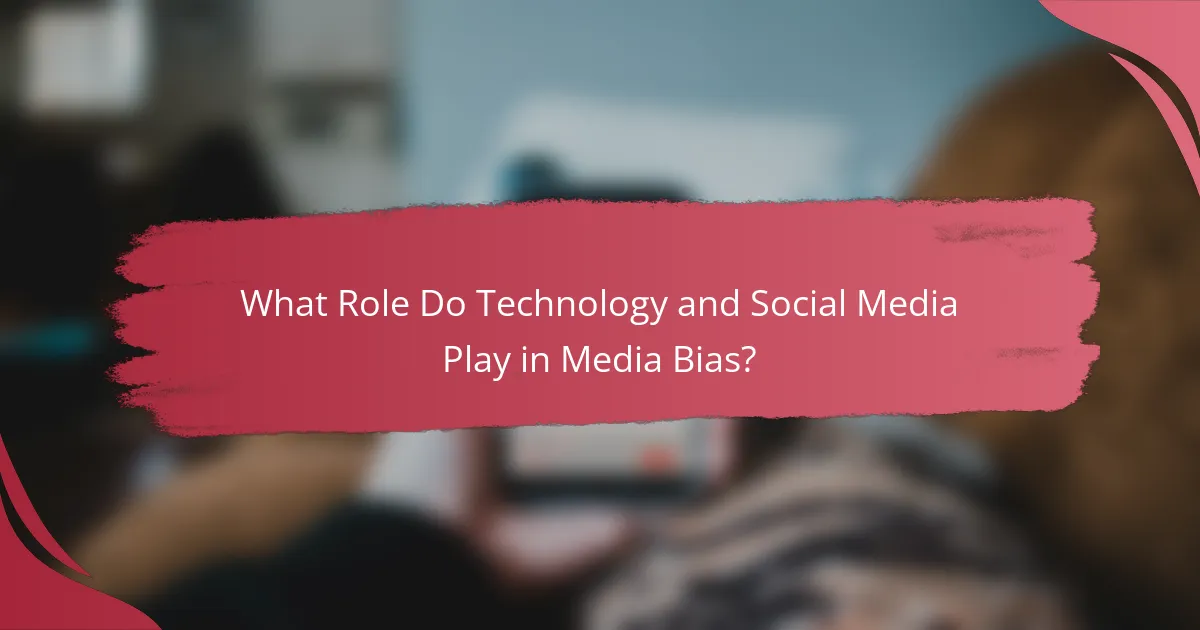
What Role Do Technology and Social Media Play in Media Bias?
Technology and social media significantly shape media bias by influencing how news is disseminated and consumed. Algorithms curate content based on user preferences, often amplifying specific viewpoints while marginalizing others.
Algorithmic influence on news feeds
Algorithms determine which news articles appear in users’ feeds, often prioritizing content that aligns with their previous interactions. This can lead to a skewed perception of reality, as users are exposed primarily to information that reinforces their existing beliefs.
For instance, a user who frequently engages with political content from a particular viewpoint may receive an overwhelming amount of similar articles, limiting exposure to diverse perspectives. Understanding these algorithms can help users seek out a broader range of news sources.
Echo chambers and filter bubbles
Echo chambers and filter bubbles arise when individuals engage primarily with like-minded individuals and content, creating an insulated environment. This phenomenon can intensify media bias by isolating users from opposing viewpoints and critical discussions.
To mitigate the effects of echo chambers, individuals should actively seek out diverse news sources and engage in discussions with those holding differing opinions. This practice can enhance critical thinking and promote a more balanced understanding of geopolitical issues.
Fact-checking tools and platforms
Fact-checking tools and platforms play a crucial role in combating media bias by verifying the accuracy of information before it spreads. These resources help users discern credible news from misinformation, which is especially important in the context of geopolitical reporting.
Popular fact-checking websites, such as Snopes or FactCheck.org, provide users with reliable assessments of news claims. Utilizing these tools can empower individuals to make informed decisions about the information they consume and share.
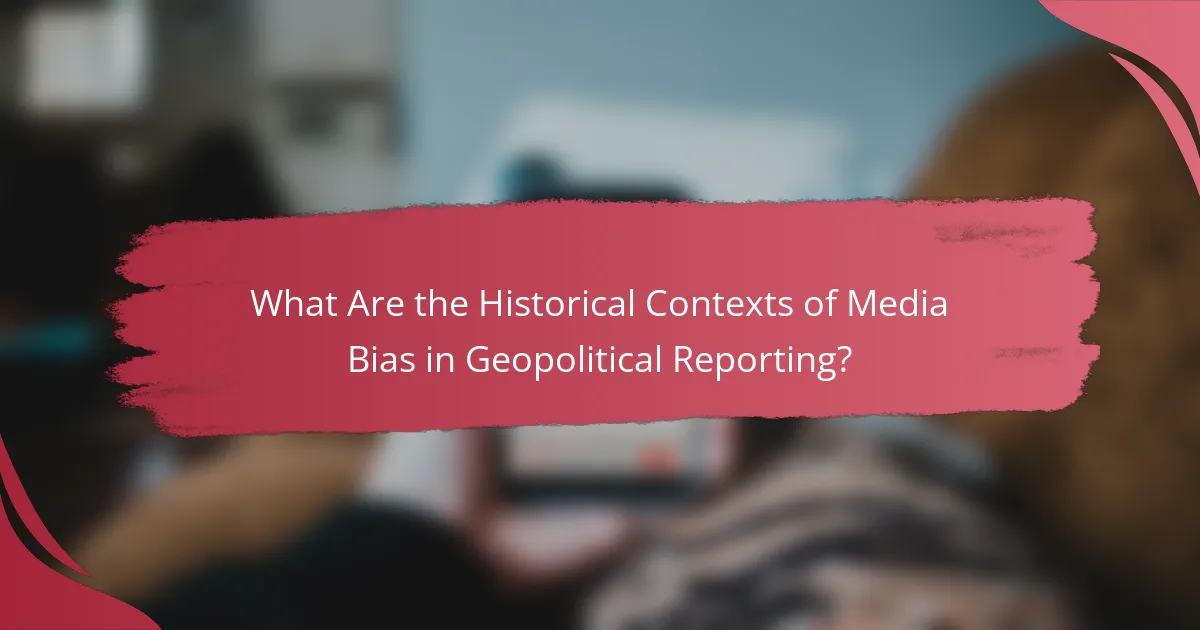
What Are the Historical Contexts of Media Bias in Geopolitical Reporting?
Media bias in geopolitical reporting has evolved through various historical contexts, influenced by political agendas, ownership structures, and cultural perspectives. Understanding these contexts helps to identify patterns of bias and their implications on public perception and policy.
The Role of Government Influence
Governments have historically influenced media narratives to shape public opinion and support foreign policy objectives. This can manifest through direct censorship, funding state-sponsored media, or leveraging regulatory frameworks to control information dissemination. For example, during the Cold War, many Western media outlets were criticized for promoting anti-communist sentiments, often at the expense of nuanced reporting.
Media Ownership and Corporate Interests
The concentration of media ownership can lead to biased reporting, as corporate interests may dictate editorial choices. Large media conglomerates often prioritize profit over impartiality, resulting in coverage that aligns with their business interests. This is evident in the portrayal of conflicts where advertisers or stakeholders have vested interests, potentially skewing public understanding.
Cultural Perspectives and National Narratives
Cultural biases play a significant role in shaping how geopolitical events are reported. Different nations may emphasize certain aspects of a conflict based on historical grievances or national identity, leading to skewed narratives. For instance, coverage of the Israel-Palestine conflict varies widely between Western and Middle Eastern media, reflecting deep-seated cultural and political divides.
The Impact of Social Media
Social media has transformed the landscape of geopolitical reporting, allowing for rapid dissemination of information but also increasing the potential for bias. Platforms can amplify certain narratives while suppressing others, often influenced by algorithms that prioritize engagement over accuracy. This has led to the rise of echo chambers, where users are exposed primarily to viewpoints that reinforce their existing beliefs.
